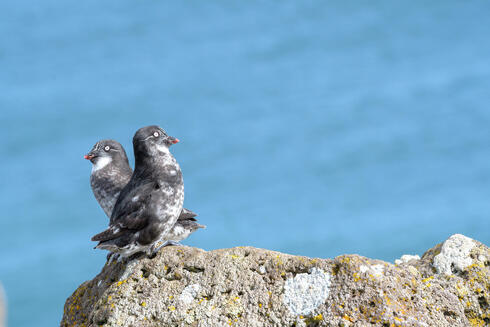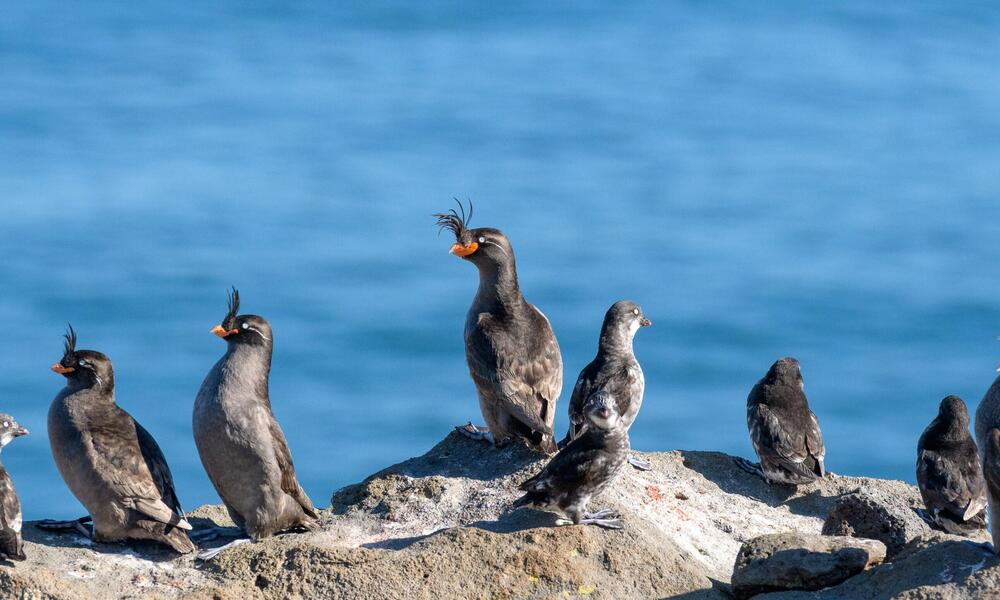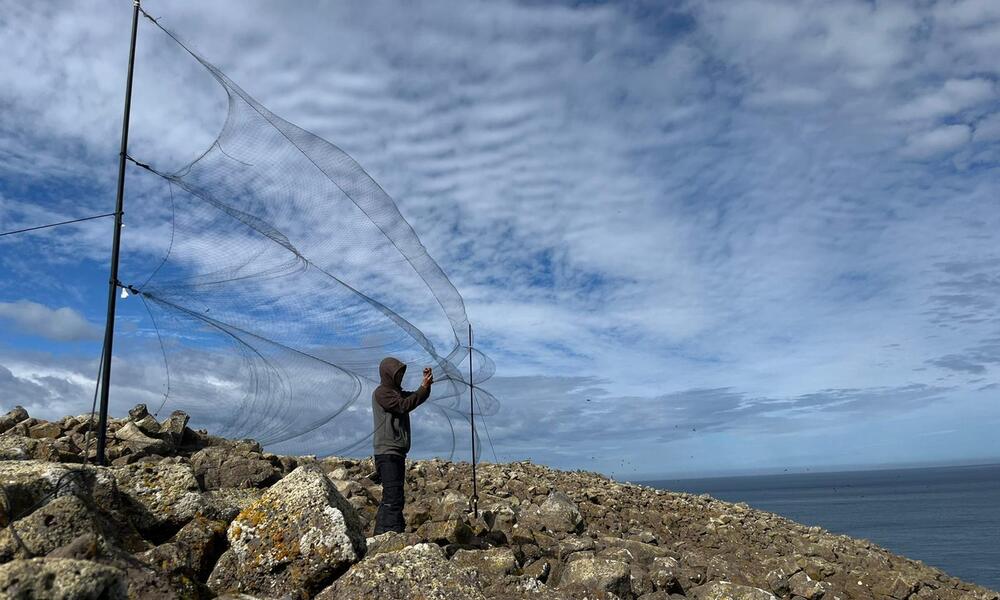As seabirds go, auklets are truly a bellwether of the health of our northern oceans. These charmingly social and charismatic birds help us monitor entire ecosystems when we research their activity by counting them, collecting samples, and spending time near them. These important long-term studies help us identify climate and ocean trends and indicate how things are changing.
Since 2016, WWF biologist Alexis Will has been monitoring the auklet species that nest near Savoonga, Alaska, a small community on the island of Sivuqaq in the middle of the northern Bering Sea. While there are six total species of auklet, least and crested auklets make up the colony there, breeding in rock crevices along windswept cliffs bordering the ocean.
The colony consists of 17,814 least auklets and 128,208 crested auklets. That may seem like quite a crowd, but at their largest, colonies number between 1 million and 3 million when they breed. Their busy breeding months have them constantly flying and foraging in search of tasty copepods, other zooplankton, and krill. They lay a single egg and raise just one chick each summer.
“I love auklets because they are fierce, energetic, animated, social, and spunky,” Will said. “To me they are mysterious and hold the promise of revealing interesting things about the ocean.”


